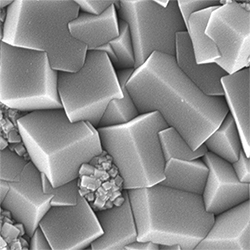News
-

 123
123Scientists Armed With Lasers Capture 3D Images of Neurons ‘Firing’ in the Brain in Research Breakthrough
The images are a “huge step forward” in understanding disorders such as autism, schizophrenia and Parkinson’s Disease.
-

 122
122Researchers develop chip-scale optical abacus
The long-term aim that the researchers have is the creation of so-called neuromorphic computer architectures – i.e. computers which replicate the human brain. One central feature is the elimination of the separation between processor and data storage. “We are also computing with light – and not with electrons, as is the case with traditional computers”
-

 233
233Dotz Nano sells first graphene quantum dots for anti-counterfeiting and optical brighteners
Nano-technology company Dotz Nano (ASX: DTZ) has received its first major sales order for its graphene quantum dots worth A$135,000.
-

 114
114Malicious code written into DNA infects the computer that reads it
In a mind-boggling world first, a team of biologists and security researchers have successfully infected a computer with a strand of DNA.
-

 233
233IBM Simulates a 56-Qubit Machine
A supercomputer surpasses the proposed limit of using conventional machines to simulate quantum computers
-

 117
117Tiny Nanoparticles Could Help Repair Damaged Brain And Nerve Cells
Nanomaterials are showing great potential in biomedicine since they can interact precisely with living systems down to the level of cells, subcellular structures and even individual molecules.
-

 113
113Rutgers-led research could revolutionize nuclear waste reprocessing and save money
A ‘Molecular Trap’ for Capturing Radioactive Iodides in Nuclear Waste
-

 115
115Graphene enables high-speed electronics on flexible materials
Terahertz radiation has a wide range of uses and can occur in everything from radio astronomy to medicine. The term refers to the electromagnetic waves whose frequencies range from 100 gigahertz to 10 terahertz. Demand for higher bandwidth in wireless communications and depiction for security applications has led to intensified research on systems and components intended for terahertz frequencies.
-

 124
124A safe optical fiber for delivering light and drugs into the body
A flexible, biodegradable optical fiber that can deliver light into the body for medical applications is the latest work of a collaboration between electrical engineers and biomaterials engineers in Penn State's Materials Research Institute.
-

 226
226We’ve evolved an even more powerful form of CRISPR gene editing
By evolving an entirely new gene editing enzyme, biologists have created a highly precise tool for changing the code of DNA that should also be safer too










